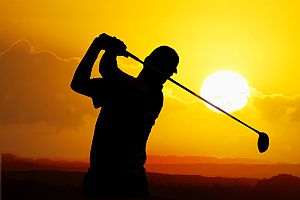Can chiropractic care improve your golf game? As a golfer, you may have pondered this very question—and now you’re in luck. A recent Titleist Performance Institute (TPI) study showed that a combination of chiropractic care and stretching enables golfers to increase their drive distance by nearly 10%. PGA golfers such as Tiger Woods and Padraig Harrington certainly believe this to be true, as they’ve incorporated chiropractic treatment into their training regimens for years. Unsurprisingly, the Titleist Performance Institute believes this to be true as well.
Sponsored by one of the most respected and popular purveyors of golf equipment and apparel, the Titleist Performance Institute (TPI) has incorporated chiropractic as a fundamental part of its program since its founding in 2003. TPI was created to study how the human body functions—and functions at its best—when it comes to the game of golf. TPI believes that chiropractors have a unique and valuable perspective in this area given their expertise in human biomechanics as well as their specialized knowledge of the musculoskeletal system. At present, there are over 9,000 TPI-certified professionals in 57 countries, employing chiropractic and other methodologies to help golfers not only improve their performance, but also to avoid injury.
TPI’s work over the past decade has clearly demonstrated that chiropractors have even more to offer golfers than pain relief and rehab support. In fact, chiropractic physicians can actually help golfers to improve their game by identifying and correcting physical limitations that can adversely affect their swings. As an example, the TPI study mentioned above compared two groups of golfers: one practicing only stretching exercises, and the other practicing stretching exercises while receiving chiropractic spinal adjustments. Both groups performed three full swing maneuvers before and after each treatment, and the driving distances they achieved were recorded. After four weeks, the stretching-only group showed no improvement in swing performance, whereas the stretching plus chiropractic group achieved greater driving distance after each treatment.
This is important information for performance-oriented golfers, because although many of them rely on chiropractic care to help them when they are in pain or injured, they may not recognize that chiropractic care can help prevent problems and improve their game. But the TPI-certified chiropractors may to be able to do just that, offering tips and techniques that allow golfers to improve their joint function, customize and optimize their warm-up exercises, recover faster from injuries and soreness, and maximize their efficiency.
So if you’re a golfer, give your chiropractor a call and ask how he or she might be able to help you. Who knows—you might end up seeing your chiropractor to relieve your back or neck pain after an overly enthusiastic round of golf and find that he or she can help take a few strokes off your score!

